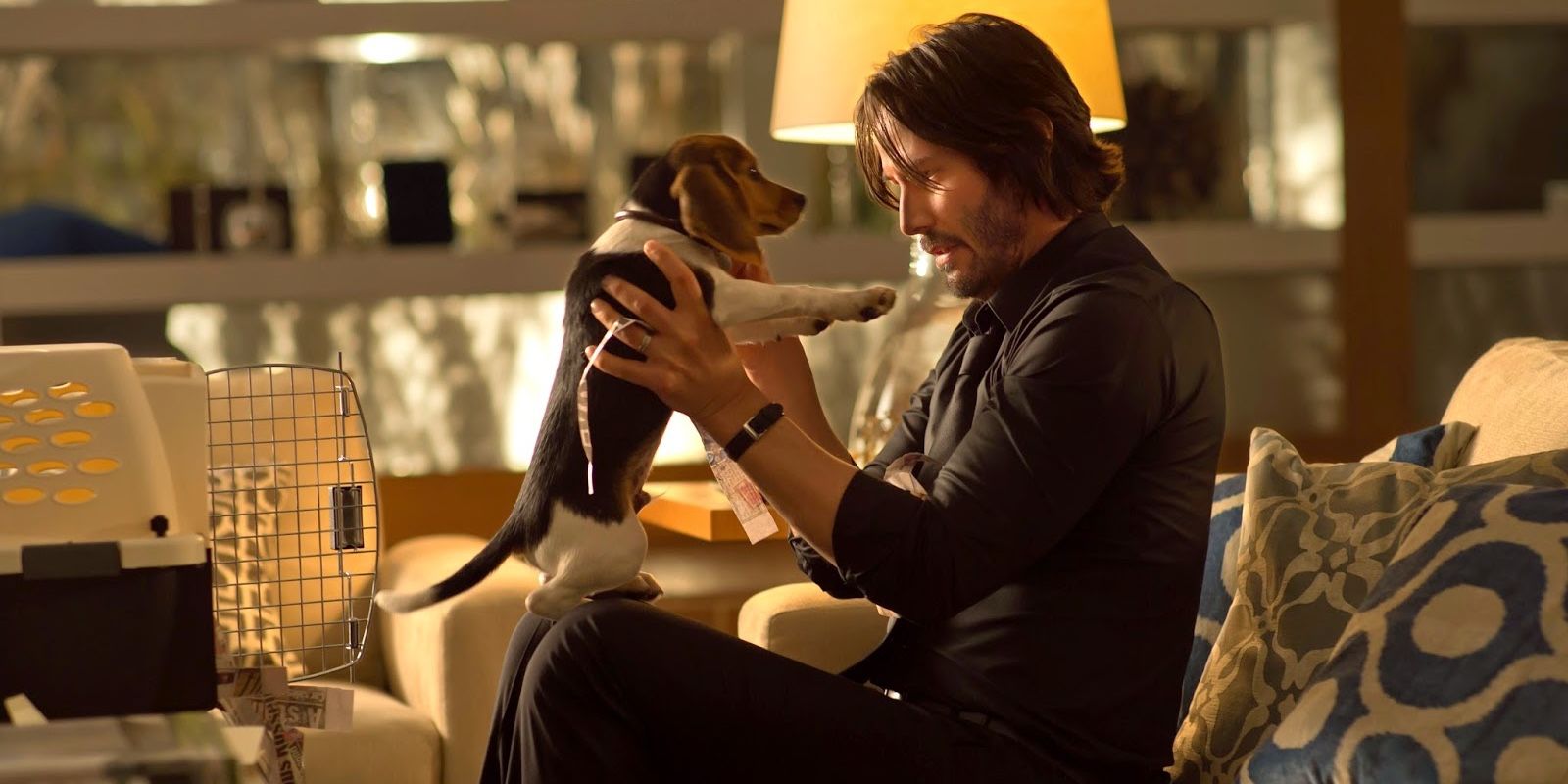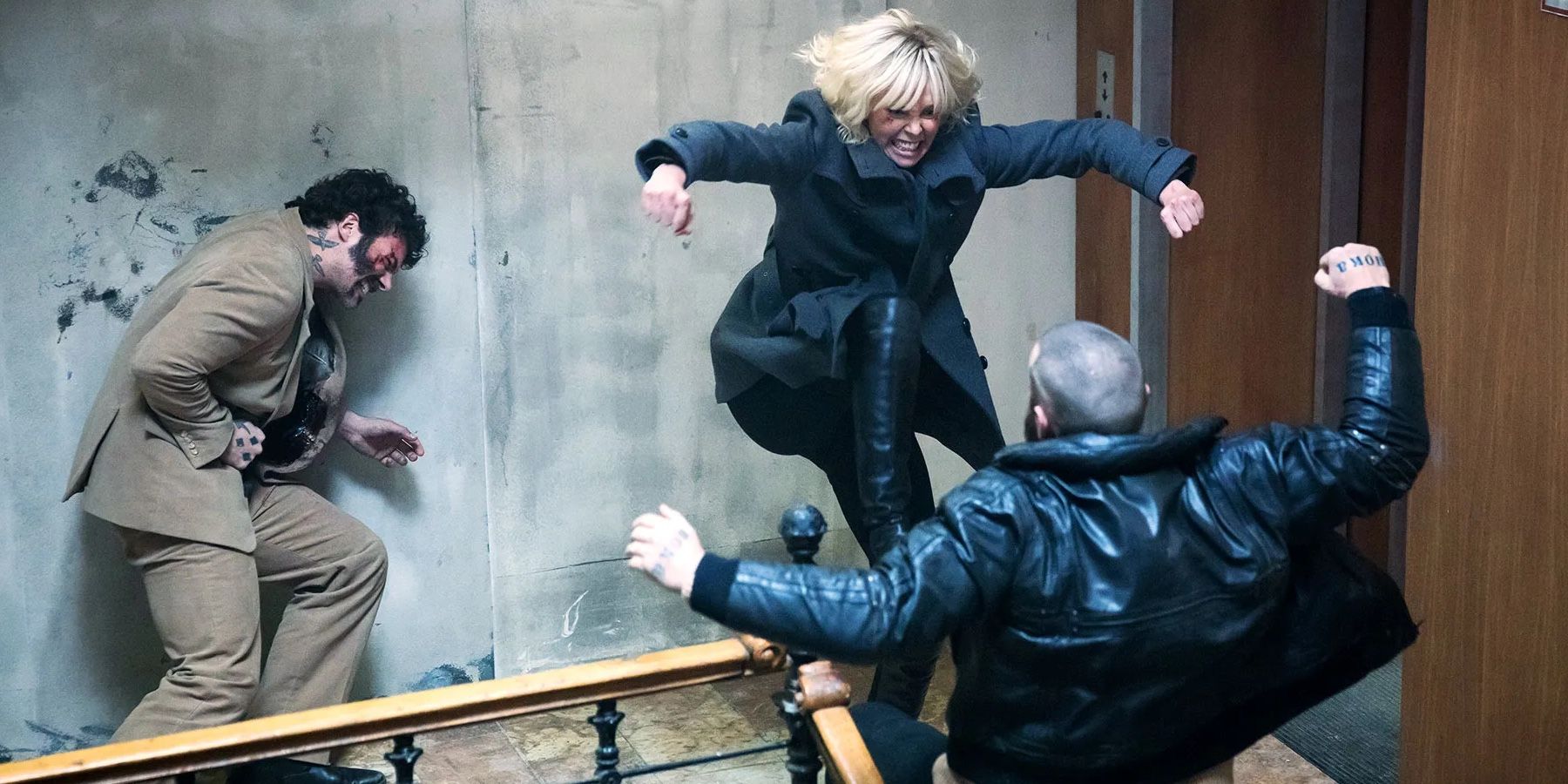Much like Liam Neeson's first Taken, it's easy to forget that John Wick originally released to low expectations. Moviegoers were so used to the "retired assassin out for revenge" trope by 2014, and the added twist of avenging a dead dog felt more like a parody of that cliché than anything else. Its trailers weren't the most awe-inspiring either. Nor was the casting of Keanu Reeves, an actor who, however well-liked, was still coming off more than a decade of disappointing projects post-Matrix trilogy.
Of course, that all changed once word of mouth spread. In a year of fantastic action movies, John Wick was 2014's surprise hit: a no-holds-barred thriller combining stylized gun-fu shootouts with a bizarre yet absorbing underground assassin culture backdrop. Nine years later, that one film inspired three acclaimed sequels -- including the newly-released John Wick: Chapter 4 -- rejuvenated Reeves' career and shot John Wick atop the pantheon of action movie icons. But by far, its greatest achievement was a systemic one: convincing Hollywood to emulate John Wick at nearly every turn.
How John Wick Redefined Action Movies
With action movies, Hollywood frequently undergoes "phases" after a genre-defining film's success, imitating its basic concept and choreography in hopes of eternally recapturing that lightning in a bottle, often with mixed results. It happened with all the 1990s Die Hard clones. It happened when early 2000s movies overused The Matrix's bullet time slow-mo effects and leather/latex wardrobe. The original Bourne trilogy inspired a wave of fight scenes reliant on disorienting shaky cam "realism," a style which, amplified by Taken's unexpected success, birthed a multitude of films where esteemed, aging movie stars routinely kick ass via quick cuts (i.e., The Equalizer, 3 Days to Kill).
John Wick's premise seemed reminiscent of those older films: a widower who, after a Russian mobster's son steals his car and kills the dog his wife left behind, returns to his old life as the unstoppable, vengeful hitman "Baba Yaga." But, thanks to years of hands-on success as professional stuntmen, directors Chad Stahelski and David Leitch created a movie whose fights were badass but still comprised of easily-defined sequences. Audiences could see everything happening, which meant they actually watched a then-50-year-old Reeves kill goons and take endless blows in return. It had more in common with John Woo and Park Chan-wook -- plus a bit of The Matrix -- than a standard Bourne brawl. For American viewers, John Wick was a refreshing alternative to every non-Marvel Cinematic Universe, Mission: Impossible, and Fast & Furious-style action film on the market. Its sequels merely upped the ante.
So did its worldbuilding. With each sequel, the John Wick films introduced new, more colorful characters and stranger lore elements that, however simple (i.e., no fighting on Continental Hotel grounds, upholding a Marker's blood oath), lent the neo-noir universe a distinct identity. Not to mention the real stakes that kept Wick's life-or-death plight ongoing. And the franchise's success produced a good number of celebrity cameos, including bit parts (Clarke Peters, Franco Nero), big names (Willem Dafoe, Anjelica Huston, Halle Berry), unorthodox castings (Common, Boban Marjanović), and overt action film homages (The Raid's Cecep Arif Rahman and Yayan Ruhian). John Wick: Chapter 4 currently boasts its most high-profile cast to date, bringing in the likes of Donnie Yen, Hiroyuki Sanada, and Bill Skarsgård to join Reeves and franchise staples Ian McShane, Laurence Fishburne and the late Lance Reddick in Wick's world. All of them are clearly enjoying their stay, and then some.
John Wick Had Hollywood Chasing a New Trend
And that's to say nothing of movies inspired by John Wick. Throughout the back half of the 2010s, Hollywood did everything possible to replicate Reeves, Stahelski and Leitch's success, especially after the release of Charlize Theron's spy-thriller Atomic Blonde. Despite being a graphic novel adaptation, the 2017 movie -- directed by Leitch -- felt incredibly Wick-like with its characters, stylized color palettes, and hardcore, often exhausting action scenes. Protagonist Lorraine Broughton's ten-minute single-take staircase fight practically spoke for itself and, coming months after John Wick: Chapter 2, Atomic Blonde was a clear sign of the Wick formula going mainstream.
Not all Wick clones are exactly the same, and certainly, not all are memorable or even good. But all have at least: 1. A master killer/assassin, 2. A stylized underground culture geared toward hired killers, or 3. Some variant of physical combat or gunfight in which one can see the lead doing their stunts. These can be seen in The Accountant, Hotel Artemis, Polar, Extraction, Nobody, Gunpowder Milkshake, The Prodigy, Kate, Day Shift, Bullet Train, Violent Night, and so on. It's a sizable list that Hollywood clearly intends to grow in the near future.
A lot of these movies even sprung from the John Wick creators' own involvement or mark on the industry. Leitch made the aforementioned Atomic Blonde and Bullet Train, while Stahelski served as a producer on Day Shift. Both Extraction and its upcoming sequel were directed by another former stuntman, Sam Hargrave. Leitch's own production company, 87North Productions, helped finance Wick clones like Nobody and Kate. Regardless of critical quality, these films marked a dynamic shift in action quality. Thanks to John Wick, studios and filmmakers now have better tools to coach actors on performing stunts, and the stars seem really into it. It's a much different place for the action genre after years of shaky cam that rendered fights dizzying at best and geographically confounding at worst.
The Legacy of John Wick
Yet, what keeps the John Wick films ahead of its imitators is simplicity. These are pure action films devoted to their craft and effectively raising the bar for great fight scenes, thanks to Stahelski's experience and Reeves' utter commitment to his character. However weird its lore gets, a John Wick movie's best performances come from the action. Its stunts are just excellent blood-soaked monologues by comparison. Hence fans' willingness to sit through nearly three hours of John Wick: Chapter 4 and eagerly await its spinoffs, Ballerina and The Continental: this time around, moviegoers know the hype is real.
Audiences are still living in Hollywood's John Wick phase, where the only expectations a John Wick sequel must surpass are its own. For everyone else, Mr. Wick's story remains a template for how to produce better action films, and the entertainment industry has certainly taken notice.
John Wick: Chapter 4 opens in theaters on March 24.



